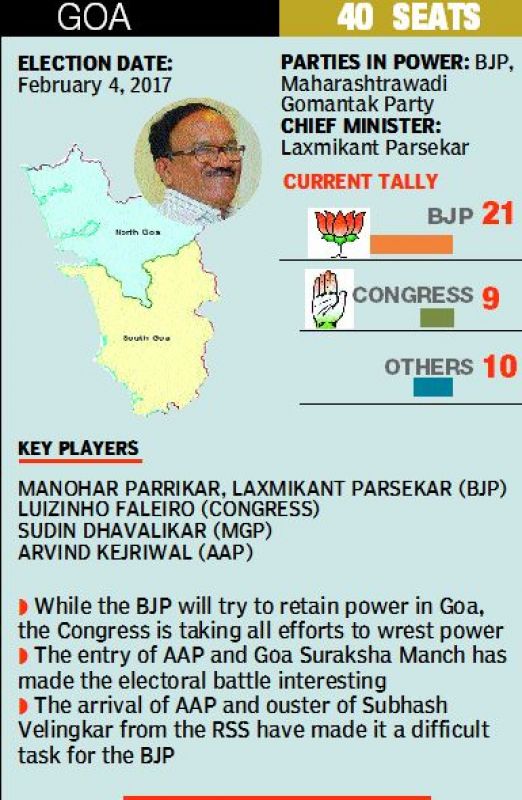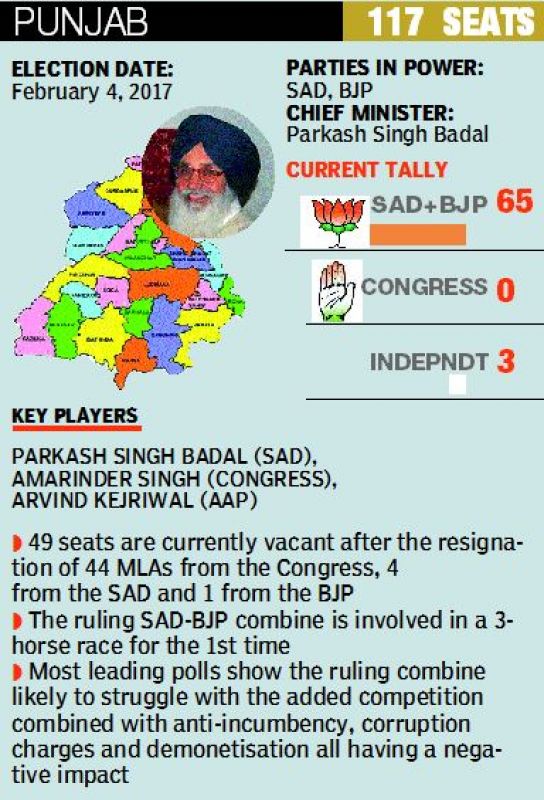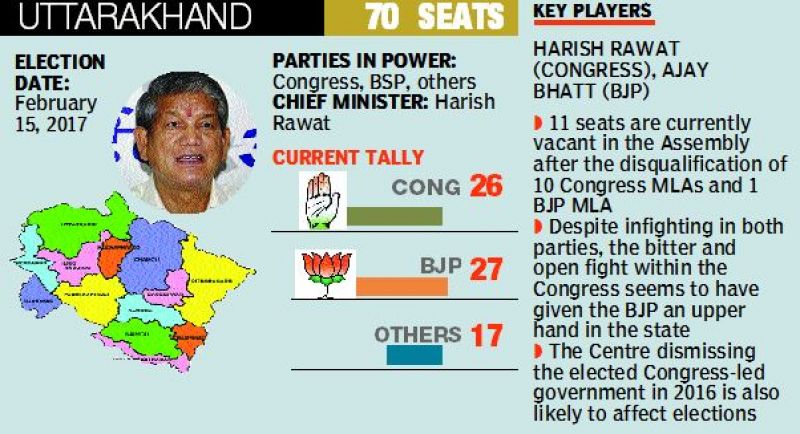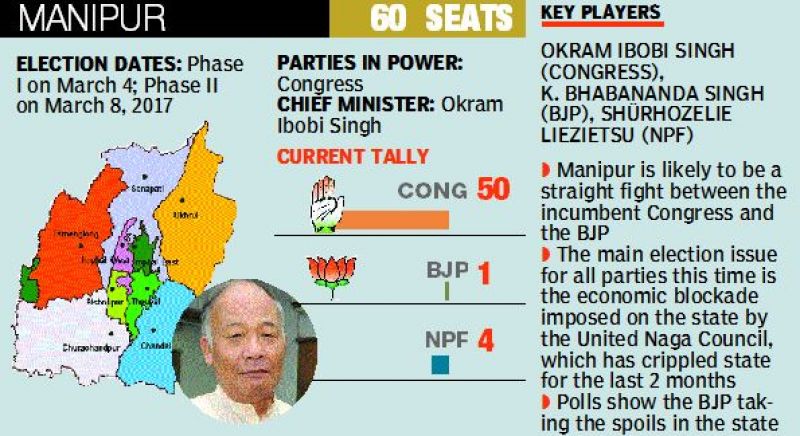360 Degree: Truth will out
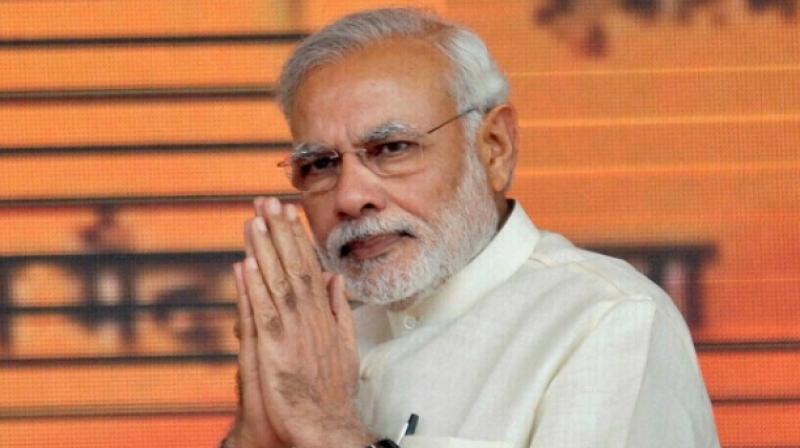
He is working hard to leave behind a legacy. Prime Minister Narendra Modi has been relentlessly trying to emerge as the “iron man” who put Pakistan “in its place”, waged a war against black money, a leader who empowered the poor and took India to dizzying heights. His surgical strikes against Pakistan, his demonetisation policy were aimed at his attempts to emerge as the “leader India never had”. Whether he succeeded in convincing India would be tested in the forthcoming Assembly polls in five states, particularly in caste-ridden Uttar Pradesh. These elections would be a mini-referendum on Modi’s policies, specially the contentious demonetisation decision.
Read: United anti-Modi block in 2019 will stay fragile
After the surgical strikes BJP’s stock rose. Modi emerged as a Prime Minister, (after Indira Gandhi), who had the ability and courage to move against Pakistan. BJP played the nationalist card hard, made jingoism its mantra and India cheered. Then on November 8, 2016 came demonetisation. Things began to change. The advantage gained by the surgical strikes began to fade. Nobody dares question the Prime Minister, so nobody did. But behind closed doors, grim saffron faces with frayed nerves told another story — that “all is not well”.
Read: BJP eyes Manipur, has advantage in Uttarakhand
After losing Delhi and then Bihar, BJP desperately needs a victory in a politically crucial state. This has become more important after demonetisation. The party functionaries travelling across the election-bound states returned with stories of “public discontement” and “public anger”. The functionaries who were asked to aid people standing in queues outside banks and ATMs for hours together, refused to do so, because of the “fear” of being targeted by the “angry masses”. Things came to such a pass that the BJP president Amit Shah had to crack the whip and told the edgy functionaries to “stop whining” and “work round-the-clock to make the party win” in the Assembly polls.
Punjab, however, seemed to be a lost cause. With anti-incumbency riding high, corruption charges levelled against the top leaders and ministers, SAD-BJP ruling coalition found itself in a sticky wicket. The demonetisation apparently demolished the rural vote bank of the ruling combination. The fight is now between the AAP and Congress. “We are not hopeful in Punjab,” a senior BJP functionary revealed. The battle is tough in the other saffron citadel of Goa. Even BJP’s most popular face in Goa, former chief minister and Union defence minister Manohar Parrikar was facing an uphill task to secure his home turf Panaji for the BJP candidate, sitting MLA Sidharth Kuncalienker. Besides the growing popularity of AAP, the RSS rebel-backed Goa Suraksha Manch (GSM) is entering the poll arena for the first time and it has vowed to defeat BJP. In Goa, the RSS unit has stated that the organisation will not play an active role in campaigning for BJP candidates. “We will not tell RSS cadre to support any particular party,” RSS sanghchalak for Goa Laxman Behre told an English daily in Goa. Without RSS backing, Goa could be a tough call for the party. But it’s in Uttar Pradesh with 403 Assembly berths that BJP will fight the mother of all battles.
If BJP wins all state elections and loses UP, it still could be viewed as a “referndum against Modi’s demonetisation”, a senior BJP leader said. It’s in this Hindi heartland where Modi and his policies will be tested. Leading the charge in this most crucial battle is BJP’s poll mascot — the indefatigable Narendra Modi.
“Demonetisation has hit us badly,” a senior BJP functionary in UP said. Yet BJP had an edge with the possibility of a multi-cornered fight. The BJP expected the 20 per cent Muslim votebank to be split between BSP, SP and Congress. With the upper caste in its pocket, the BJP was also hopeful of attracting a large chunk of OBCs other than Yadavs and dalits. In western UP, it was confident of winning over the Jats as it did in the 2014 general elections. The BJP continued to have an edge till the feud raged in the Yadav parivar. With Akhilesh Yadav winning the battle and getting the cycle symbol, the saffronites began to slip. Akhilesh Yadav’s clean image, his fight against the “corrupt old guard”, his slogan for “all round development” hurtled him to the top. To make matters worse, SP and Congress are in talks for an alliance. If this happens, a majority of the 20 per cent Muslim votes will go for this combination. Besides eight per cent of the Yadav vote bank, Akhilesh Yadav-led SP could also draw a large chunk of the other backward castes. If Congress-SP alliance works out, the combination could also draw a good number of the 22 per cent upper caste votes. Even if Akhilesh decied to go alone, beside his formidable “Muslim-Yadav (MY) combination, he also has a large appeal among the youth and women.
The BJP, however, is confident that the Muslim and OBC votes would split between SP and BSP. Mayawati has fielded 97 Muslims candidates. “This could split the Muslim vote,” a BJP leader said. But the problem nagging the BJP was its failure to project a credible face, which could match upto Akhilesh Yadav or Mayawati. Modi is the face, but he is the Prime Minister. “Our lack of a face to project could hit us hard,” the BJP leader said.
In UP’s multi-cornered fight, the situation is fluid. There is also a strong possibility of a fractured mandate. Whatever may be the outcome to win this mini-referendum, BJP has to emerge as the largest party to attract parties like RLD and other smaller outfits to form a government.
Uttarakhand at this point is the only state where BJP seems to have a clear edge, thanks to infighting within the Congress. But winning Uttarakhand and Manipur will not put BJP on the driver’s seat for the 2019 general elections. It is UP, however, which will deliver the final verdict on Modi’s gamble to make India cashless.


